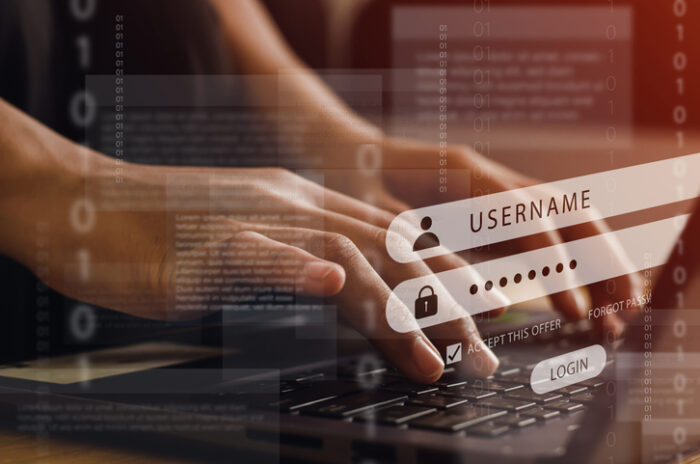Los programas de formación en ciberseguridad suelen percibirse como aburridos y poco interesantes, lo que hace que los empleados se sientan desconectados, por lo que es de suma importancia añadir personalidad a su programa de concienciación sobre seguridad. Es un hecho conocido que los ciberdelincuentes también son cada vez más hábiles en el desarrollo de nuevos fraudes y métodos para piratear datos, por lo que, para salvar esta brecha, es esencial mantener a sus empleados comprometidos. He aquí tres formas eficaces de conseguirlo.
Contar historias: Humanizar la ciberseguridad
Una de las formas más eficaces de dotar de personalidad a su programa de concienciación sobre seguridad es contar historias. La gente se siente atraída de forma natural por las historias, y éstas proporcionan un contexto que ayuda a las personas a relacionarse con conceptos abstractos, como la ciberseguridad.
Comience compartiendo historias reales sobre violaciones de la seguridad o incidentes que hayan tenido un impacto significativo en otras organizaciones. Destaque las consecuencias y las lecciones aprendidas. También puede utilizar historias de éxito de empleados que identificaron y evitaron una amenaza potencial para la seguridad, haciendo hincapié en su papel como héroes de la ciberseguridad: una buena forma de empezar a individualizar la educación en ciberseguridad es reconocer los distintos tipos de personalidad y trabajar con ellos.
Además, considere la posibilidad de crear un personaje de ficción que encarne tanto los aspectos positivos como los negativos de la ciberseguridad. Desarrolle un personaje con el que los empleados puedan conectar y al que puedan seguir mientras se enfrentan a diversos retos de seguridad. Utilice este personaje para transmitir las mejores prácticas de seguridad y ofrecer ejemplos de cómo manejar diferentes situaciones.
Recuerde que una narración eficaz requiere creatividad, emoción y compromiso. El objetivo es hacer que su programa de concienciación sobre seguridad sea memorable y cercano, facilitando que los empleados interioricen y apliquen los principios que está enseñando.
Gamificación: Hacer divertido el aprendizaje
La gamificación es una herramienta poderosa que puede añadir personalidad y compromiso a su programa de concienciación sobre seguridad. En lugar de depender de monótonas conferencias y extensos documentos normativos, convierta la formación en ciberseguridad en un juego interactivo. Cree pruebas, rompecabezas y simulaciones que desafíen a los empleados a aplicar los principios de seguridad de forma divertida y competitiva. Por ejemplo, puede crear una sala de escape con temática de ciberseguridad en la que los empleados deban resolver enigmas y acertijos relacionados con las mejores prácticas de seguridad para "escapar" de una amenaza virtual. Esto no sólo educa a su personal, sino que también fomenta el trabajo en equipo y mejora sus habilidades para resolver problemas.
Otro enfoque consiste en establecer un sistema de recompensas. Ofrezca incentivos, como tarjetas regalo o reconocimientos, a los empleados que completen los módulos de formación o demuestren prácticas ejemplares de ciberseguridad. Esto puede motivar a los empleados a participar activamente en el programa. La gamificación también permite realizar un seguimiento y medir el progreso de los empleados de forma eficaz. Al integrar una tabla de clasificación o un sistema de puntos, puede fomentar una competición amistosa y mantener a los empleados comprometidos mientras se esfuerzan por mejorar sus conocimientos y habilidades de ciberseguridad.
Formación personalizada: Adaptación a las necesidades individuales
Un enfoque único de la formación para la concienciación en materia de seguridad suele ser ineficaz. No basta con centrarse en los aspectos técnicos de la seguridad de la información, ya que la ciberseguridad es multidisciplinar por naturaleza y el aspecto humano desempeña un papel fundamental en ella. Las personas tienen distintos niveles de conocimientos sobre ciberseguridad y diversas preferencias de aprendizaje. Para que su programa sea más atractivo y personal, considere la posibilidad de adaptar la formación a las necesidades individuales.
Empiece por realizar una evaluación de referencia de los conocimientos y niveles de aptitud de los empleados en materia de ciberseguridad. Utilice los resultados para crear rutas de formación personalizadas, en las que los empleados puedan acceder a recursos que aborden sus áreas específicas de debilidad o interés. Este enfoque garantiza que los empleados reciban información relevante y no se vean abrumados con contenidos redundantes.
Además, ofrezca opciones de formación flexibles para adaptarse a distintos estilos de aprendizaje. Algunos empleados pueden preferir talleres prácticos, mientras que otros pueden sobresalir con cursos en línea o tutoriales en vídeo. Al ofrecer una gama de formatos de formación, se atienden las diferentes preferencias y se hace más atractivo el aprendizaje.
Anime a los empleados a responsabilizarse de su formación en ciberseguridad permitiéndoles fijar objetivos personales y realizar un seguimiento de sus progresos. Reconozca y recompense sus logros, reforzando la importancia de la concienciación sobre la seguridad y creando un sentimiento de inversión personal en el programa.
Añadir personalidad a su programa de concienciación sobre seguridad es esencial para aumentar el compromiso de los empleados y, en última instancia, mejorar la postura de ciberseguridad de su organización. Al incorporar la narración de historias, la gamificación y la formación personalizada, puede hacer que su programa sea más cercano, interactivo y eficaz. Recuerde que la clave del éxito de la concienciación en materia de seguridad no reside únicamente en transmitir información, sino en fomentar una cultura de concienciación en materia de ciberseguridad dentro de su organización.
¿Desea obtener más información? Póngase en contacto con nosotros hoy mismo o lea nuestra guía cómo crear un programa de concienciación sobre ciberseguridad para llevar sus iniciativas de seguridad al siguiente nivel.



